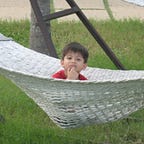Late to the Party: The LK-99 Kerfuffle
A comprehensive discussion of replication failures in the LK-99 saga
Initial hopes of LK-99 — a compound composed of copper, lead, phosphorus, and oxygen — becoming the first superconductor to operate at room temperature and standard pressure have been dashed. Instead, research has uncovered that impurities within the material, notably copper sulfide, are responsible for causing abrupt decreases in its electrical resistance and demonstrating partial levitation over a magnet — properties reminiscent of superconductors.
The saga of LK-99 commenced in late July when a team led by Sukbae Lee and Ji-Hoon Kim, hailing from the Quantum Energy Research Centre in Seoul, released preprints. These preprints claimed that LK-99 exhibited superconducting properties at standard pressure and temperatures reaching up to at least 127 ºC (400 kelvin). This assertion, given that all previously confirmed superconductors require extremely low temperatures and high pressures, generated considerable excitement among both the scientific community and the general public.
However, the extraordinary claim prompted various researchers to attempt replication of LK-99’s properties. Initial efforts yielded inconclusive results. Nevertheless, many experts now confidently assert that the accumulated evidence dismisses the notion of LK-99 being a room-temperature superconductor. This was also published in the journal Nature in an article titled “Claimed superconductor LK-99 is an online sensation — but replication efforts fall short”.
Evidence
Superconductors primarily exhibit two really important properties: the Meissner effect and abrupt drops in resistivity. But separate teams at Peking University and the Chinese Academy of Sciences (CAS), both in Beijing, found mundane explanations for these phenomena.
Another study, by researchers in the United States and Europe, combined experimental and theoretical evidence to demonstrate how LK-99’s structure made superconductivity infeasible. Additionally, other experiments that produced and examined pure LK-99 samples confirmed it as an insulator, conclusively negating its status as a superconductor.
One particularly compelling piece of evidence was a video from a South Korean team featuring a coin-shaped, silvery LK-99 sample seemingly levitating over a magnet — a phenomenon linked to the Meissner effect, a defining trait of superconductors. Although several unverified videos emerged on social media depicting LK-99 levitation, none of the initial replication attempts by researchers were able to witness this phenomenon, casting further doubt on its purported superconductivity.
Impurities
The South Korean researchers pinpointed a critical temperature where LK-99 exhibited a significant tenfold drop in resistance, from roughly 0.02Ωcm to 0.002 Ωcm. A chemist from the University of Illinois Urbana-Champaign, Prashant Jain, delved into LK-99’s synthesis process and discovered an imbalanced recipe. For every part of pure LK-99, the production yielded 17 parts of copper and 5 parts of sulfur, leading to an array of impurities, particularly copper sulfide (Cu2S), as confirmed by the South Korean team.
Jain’s research identified a noteworthy detail: at 104 ºC, Cu2S undergoes a phase transition, resulting in a sharp decrease in resistivity when exposed to air. This phenomenon closely resembled LK-99’s purported superconducting phase transition, as outlined in Jain’s preprint.
Subsequently, the Chinese Academy of Sciences (CAS) team explored the impact of Cu2S impurities in LK-99. Their study involved two samples: one heated in a vacuum, containing 5% Cu2S content, and the other exposed to air, featuring 70% Cu2S content. The first sample gradually increased resistivity as it cooled, consistent with other replication attempts. In contrast, the second sample exhibited a remarkable plunge in resistivity at approximately 112 ºC (385 K), closely mirroring the South Korean team’s observations.
Despite these findings, drawing definitive conclusions about LK-99’s properties remains challenging due to its unpredictable nature and the varying impurity levels present in samples.
LK-99’s True Behaviour
The compelling evidence explaining the drop in resistivity and half-levitation in LK-99 left many in the scientific community unconvinced of its room-temperature superconductivity. However, fundamental questions persisted regarding the material’s actual characteristics.
Initial theoretical investigations using density functional theory (DFT) hinted at intriguing electronic features known as flat bands. These regions, where electrons move sluggishly and exhibit strong correlations, sometimes lead to superconductivity. However, these calculations rested on unverified assumptions about LK-99’s structure.
In pursuit of a deeper understanding, a US-European research group employed precision X-ray imaging to decipher LK-99’s structure. This critical imaging unveiled a clear picture of the flat bands, demonstrating their unsuitability for superconductivity. Instead, these flat bands in LK-99 arose from highly localized electrons that couldn’t facilitate the necessary ‘hopping’ characteristic of superconductors.
On August 14, a separate team from the Max Planck Institute for Solid State Research in Stuttgart, Germany, achieved a breakthrough by synthesizing pure, single crystals of LK-99. Employing a method called floating-zone crystal growth, they eliminated sulfur contamination, resulting in a transparent purple crystal — pure LK-99. In its pristine form, free from impurities, LK-99 revealed itself as an insulator with resistance reaching millions of ohms — too high for standard conductivity testing. While displaying slight ferromagnetic and diamagnetic properties, it fell short of demonstrating even partial levitation. The team attributed the previous hints of superconductivity in LK-99 to the presence of Cu2S impurities, absent from their crystal.
In all, our dreams of an ambient-pressure room-temperature superconductor are doomed for now. It’s unfortunate but that’s just the way things go.
That’s all for me here. Thank you for reading and have a great day.
